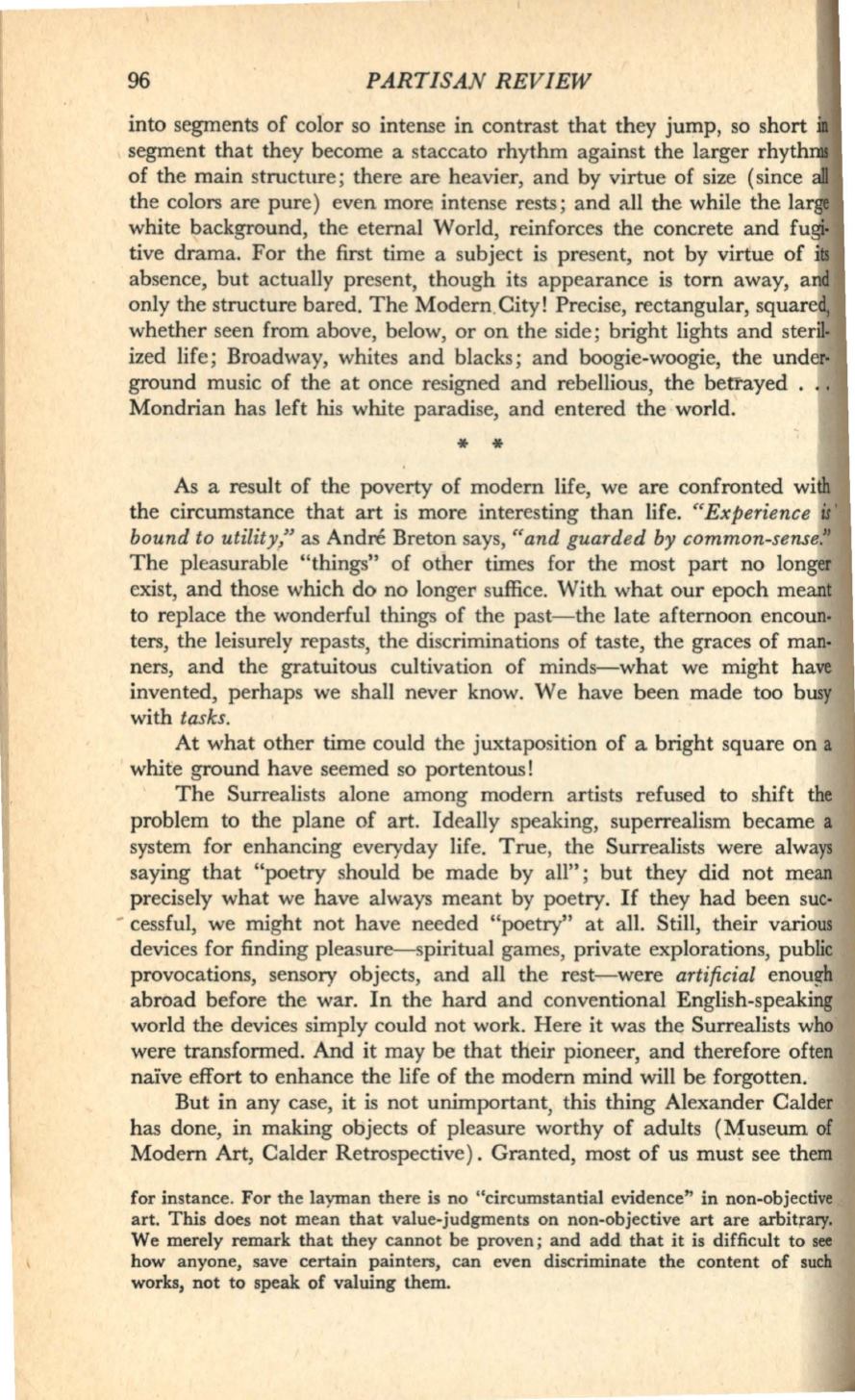
96
PARTISAN REVIEW
into segments of coi'or so intense in contrast that they jump, so short
segment that they become a staccato rhythm against the larger rhythill
of the main structure; there are heavier, and by virtue of size (since
aD
the colors are pure) even more intense rests; and all the while the large
white background, the eternal World, reinforces the concrete and fugi·
tive drama. For the first time a subject is present, not by virtue of its
absence, but actually present, though its appearance is torn away, and
only the structure bared. The Modern.City! Precise, rectangular,
square~
whether seen from above, below, or on the side; bright lights and steril·
ized life; Broadway, whites and blacks; and boogie-woogie, the under·
ground music of the at once resigned and rebellious, the betrayed .
Mondrian has left his white paradise, and entered the world.
* *
As a result of the
pove~ty
of modern life, we are confronted with
the circumstance that art is more interesting than life.
«Experience
is·
bound to utility/'
as Andre Breton says,
«and guarded by common-sense."
The
pleasurabl~
"things" of other times for the most part no longer
exist, and those which do no longer suffice. With what our epoch meant
to replace the wonderful things of the past-the late afternoon encoun·
ters, the leisurely repasts, the discriminations of taste, the graces of man·
ners, and the gratuitous cultivation of minds-what we might have
invented, perhaps we shall never know. We have been made too busy
with
tasks.
.
At what other time could the juxtaposition of a bright square on a
white ground have seemed so portentous!
The Surrealists alone among modern artists refused to shift the
problem to the plane of art. Ideally speaking, superrealism became a
system for enhancing everyday life. True, the Surrealists were always
saying that "poetry should be made by all"; but they did not mean
precisely what we have always meant by poetry.
If
they had been sue·
• cessful, we might not have needed "poetry" at all. Still, their various
devices for finding pleasure-spiritual games, private explorations, public
provocations, sensory objects, and all the rest-were
artificial
enough
abroad before the war. In the hard and conventional l?.nglish-speaking
world the devices simply could not work. Here it was the Surrealists who
were transformed. And it may be that tHeir pioneer, and therefore often
naive effort to enhance the life of the modern mind will be forgotten.
But in any case, it is not unimportant, this thing Alexander Calder
has done, in making objects of pleasure worthy of adults (Museum of
Modern Art, Calder Retrospective) . Granted, most of us must see them
for instance. For the layman there is no "circumstantial evidence" in non-objective
art. This does not mean that value-judgments on non-objective art are arbitrary.
We merely remark that they cannot be proven; and add that
it
is difficult to see
how anyone, save certain painters, can even discriminate the content of such
works, not to speak of valuing them.


